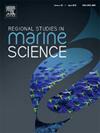Sediment quality evaluation in a strategic port zone: Application of Artemia franciscana and Emerita analoga in Callao Bay, Peru
IF 2.1
4区 环境科学与生态学
Q3 ECOLOGY
引用次数: 0
Abstract
The ocean, as the largest continuous planetary ecosystem, hosts a vast array of organisms spanning different trophic levels, forming intricate food webs. However, escalating coastal development and natural resource exploitation pose significant risks, particularly pollution, leading to declines in plant and animal populations and habitat degradation. This study aimed to investigate the toxicity of marine sediment quality from Callao Bay, Peru, on marine crustaceans (A. franciscana and E. analoga), examining contamination levels, site-specific effects, and seasonal variability. Four sampling areas were considered and georeferenced using GPS (PA1 = Naval School, PA2 = Peruvian Marine Institute, PA3 = Callao Pier, and PA4 = San Lorenzo Island). Toxicity bioassays were conducted in four seasons (fall, winter, spring, and summer), with physicochemical parameters measured in situ (temperature, pH, salinity, and conductivity). Sediment samples exhibited significant variations in toxicity levels and organism responses. E. analoga showed the highest sensitivity to sediment toxicity compared to A. franciscana, particularly in winter, suggesting its potential as an indicator species for assessing environmental risks. The Pacific sand crab displayed elevated mortality rates at sites PA4 and PA3, as evidenced by higher LC50 values. Overall, these findings underscore the complex relationship between environmental factors, sediment quality, and organism responses, emphasizing the need for comprehensive monitoring and management strategies to safeguard marine ecosystem health.
求助全文
约1分钟内获得全文
求助全文
来源期刊

Regional Studies in Marine Science
Agricultural and Biological Sciences-Ecology, Evolution, Behavior and Systematics
CiteScore
3.90
自引率
4.80%
发文量
336
审稿时长
69 days
期刊介绍:
REGIONAL STUDIES IN MARINE SCIENCE will publish scientifically sound papers on regional aspects of maritime and marine resources in estuaries, coastal zones, continental shelf, the seas and oceans.
 求助内容:
求助内容: 应助结果提醒方式:
应助结果提醒方式:


